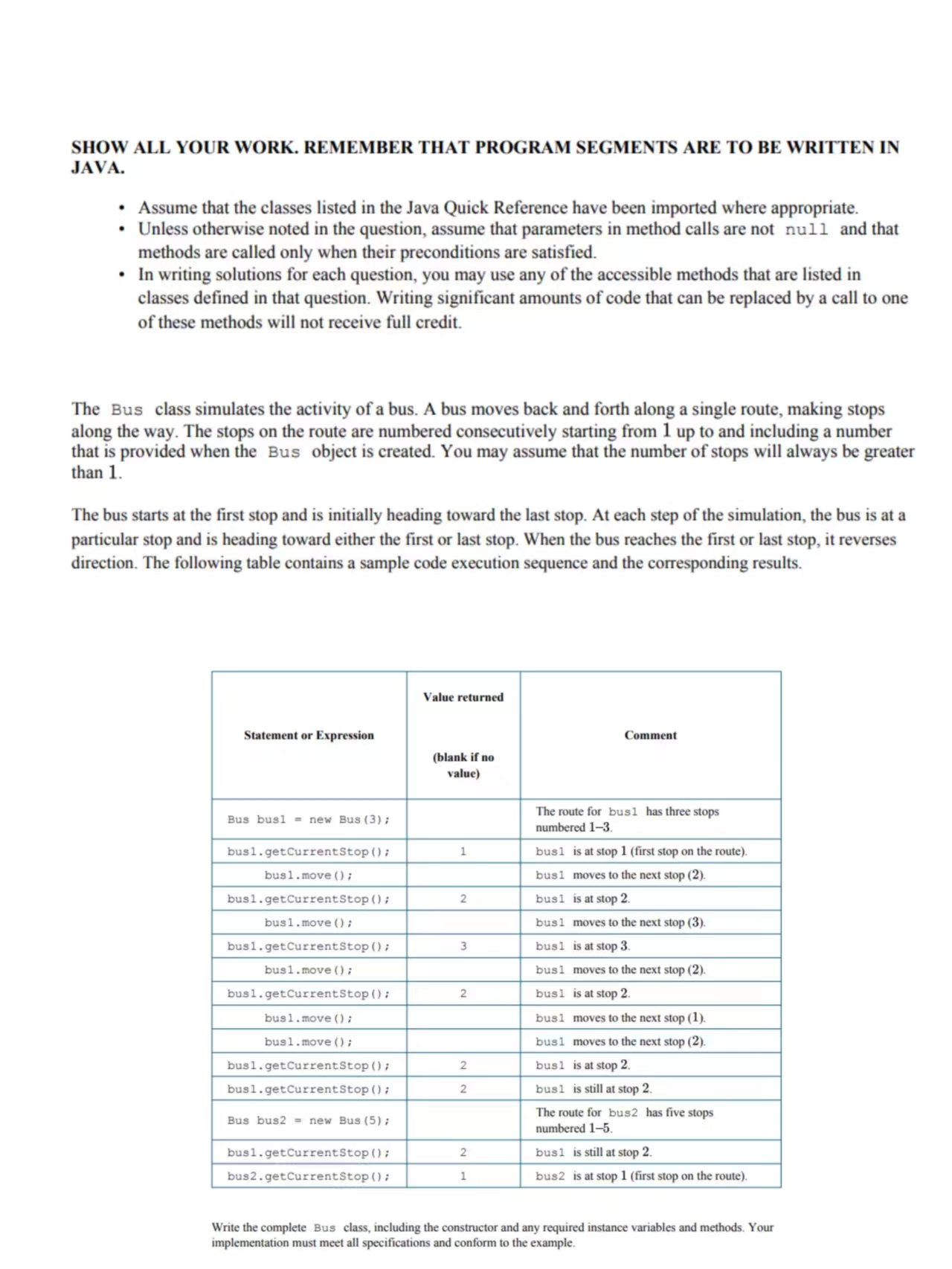Answered step by step
Verified Expert Solution
Question
1 Approved Answer
SHOW ALL YOUR WORK. REMEMBER THAT PROGRAM SEGMENTS ARE TO BE WRITTEN IN JAVA. Assume that the classes listed in the Java Quick Reference have
SHOW ALL YOUR WORK. REMEMBER THAT PROGRAM SEGMENTS ARE TO BE WRITTEN IN JAVA.
Assume that the classes listed in the Java Quick Reference have been imported where appropriate.
Unless otherwise noted in the question, assume that parameters in method calls are not null and that methods are called only when their preconditions are satisfied.
In writing solutions for each question, you may use any of the accessible methods that are listed in classes defined in that question. Writing significant amounts of code that can be replaced by a call to one of these methods will not receive full credit.
The Bus class simulates the activity of a bus. A bus moves back and forth along a single route, making stops along the way. The stops on the route are numbered consecutively starting from up to and including a number that is provided when the Bus object is created. You may assume that the number of stops will always be greater than
The bus starts at the first stop and is initially heading toward the last stop. At each step of the simulation, the bus is at a particular stop and is heading toward either the first or last stop. When the bus reaches the first or last stop, it reverses direction. The following table contains a sample code execution sequence and the corresponding results.
tableStatement or Expression,tableValue returnedblank if novalueCommentBus bus new Bus ;tableThe route for bus has three stopsnumbered bus getCurrentstop ;bus is at stop first stop on the routebus move ;bus moves to the next stop busgetCurrentstop ;bus is at stop bus move ;bus moves to the next stop bus getCurrentstop ;bus is at stop bus move ;bus moves to the next stop busgetCurrentstop :bus is at stop bus move ;bus moves to the next stop bus move ;bus moves to the next stop bus getCurrentstop ;bus is at stop bus getCurrentstop ;bus is still at stop Bus bus new Bus ;tableThe route for bus has five stopsnumbered busgetCurrentstop ;bus is still at stop bus getCurrentstop ;bus is at stop first stop on the route
Write the complete Bus class, including the constructor and any required instance variables and methods. Your implementation must meet all specifications and conform to the example.

Step by Step Solution
There are 3 Steps involved in it
Step: 1

Get Instant Access to Expert-Tailored Solutions
See step-by-step solutions with expert insights and AI powered tools for academic success
Step: 2

Step: 3

Ace Your Homework with AI
Get the answers you need in no time with our AI-driven, step-by-step assistance
Get Started


